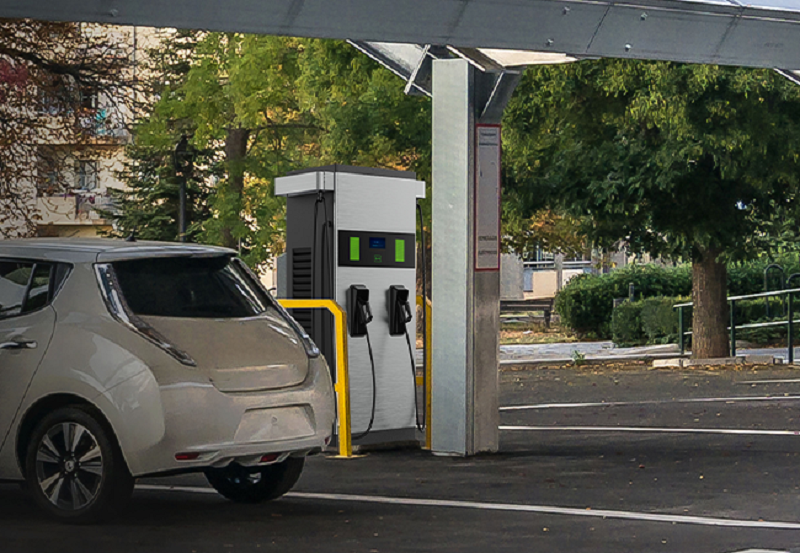
DC fast chargers (DCFC) are no doubt an integral part of the EV charging infrastructure. However, there are many myths about DCFC charging. Today, we'll clear up seven common rumours about DCFC chargers and reveal the truth behind them.
Myth 1: DCFC Chargers are Harmful to EV Batteries
Truth: This statement is not accurate. In fact, DCFC chargers are safe for EV batteries. Modern EVs are equipped with an advanced Battery Management System (BMS), which intelligently regulates charging parameters to ensure that the battery operates at its optimal condition. Although DCFC chargers are more powerful, the BMS intelligently controls the charging rate to protect the health of the battery. Of course, fast charging may put a slight extra burden on the battery compared to slow charging, but this effect is minimal.
Myth 2: DCFC Chargers are Only Suitable for Long-distance Journeys
Truth: This is a one-sided understanding of DCFC chargers. It is true that DCFC chargers are preferred for long-distance travel due to their efficiency and speed. However, its application scenarios go far beyond that. In our daily lives, whether office workers use their free time during the working day to recharge, or respond to emergencies or unplanned trips, DCFC chargers provide a reliable charging solution that quickly replenishes power. So, whether you are travelling long or short distances, DCFC chargers can play an important role.
Myth 3: All DCFC Chargers Charge With The Same Speed
Truth: This is a common misconception. In fact, the charging speed of DCFC chargers varies depending on power capacity and compatibility with EVs. As technology continues to advance, newer DCFC devices tend to support faster charging speeds. At the same time, EV charger vendors are constantly upgrading the charging stations on their vehicles to better utilize these advanced charging technologies. Therefore, when choosing charging supply equipment, consumers need to be aware of their vehicle's charging capacity as well as the charging speed of the charging equipment to make more efficient use of their charging time.
Myth 4: DCFC Chargers are Not Compatible Across EV Brands
Truth: This is a common misconception about DCFC chargers. In fact, DCFC chargers have good compatibility across EV brands thanks to the widespread use of standardized charging connectors such asCCS (Combined Charging System) and CHAdeMO. This means that no matter which brand of EV you drive, you can easily find a suitable DCFC charger. In addition, many modern DCFC charging stations are equipped with multiple connectors to accommodate different charging standards, further increasing the availability and convenience of charging facilities.
Myth 5: DCFC Chargers are Expensive to Use
Truth: The issue of the cost of using DCFC chargers cannot really be generalized. While the cost per kilowatt hour (kWh) of a DCFC charging station may be a little higher than home charging, it also depends on the location, the charging network, and whether or not you're on a membership program. Some charging providers offer very competitive rates, and DCFC charging is actually a good option for those who need a quick charge. As the EV market continues to expand, the cost of the DCFC charger becomes more transparent and cost-effective.
Myth 6: DCFC Chargers Always Charge at Full Speed
Truth: Some people believe that DCFC chargers always charge at maximum speed, which is a misconception. Charging speed is not a fixed value, and it is affected by many factors. For example, the current state of the EV battery, the ambient temperature, and the performance of the charger. Generally speaking, charging will be faster when the battery is low, but it will gradually slow down as the battery nears full capacity. Understanding these nuances can help EV owners better manage charging expectations, plan to charge more effectively, and thus make better use of Level 3 DCFC chargers.
Myth 7: DCFC Chargers are Not Environmentally Friendly
Truth: While the manufacturing and sourcing of electricity for DCFC chargers do have some environmental impact, overall, their carbon footprint is typically lower than that of a conventional internal combustion engine. This is because electric cars are more energy efficient and emit fewer greenhouse gases than conventional vehicles, even when taking into account all methods of power generation. What's more, the environmental impact of DCFC charging will be further reduced as the grid increasingly adopts renewable energy sources.
Conclusion
DCFC chargers are an integral component of electric vehicle charging facilities.However, there remain various misconceptions surrounding them. DCFC causes minimal battery damage. Second, it's suitable not only for long-distance travel but also for daily use as well as emergency purposes, with speed compatibility costs varying according to each charger. Finally, its carbon footprint is typically lower than that of conventional vehicles, and as technology improves, so too will its environmental footprint be further mitigated through charging technology advances.
Post time: Apr-08-2024
